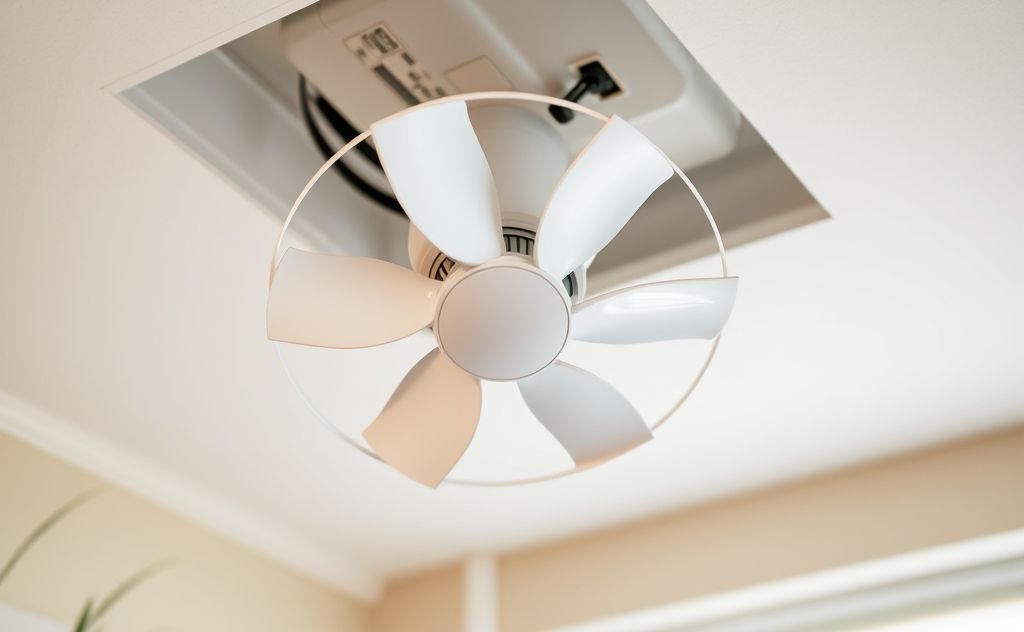The HVAC fan circulates air throughout the system, ensuring efficient heating and cooling, improving indoor air quality, and maintaining consistent temperature.
The HVAC fan is the unsung hero of your heating and cooling system. While most homeowners focus on the thermostat or outdoor unit, this crucial component works tirelessly to circulate air, maintain comfort, and improve indoor air quality throughout your home.

Primary Functions of an HVAC Fan
Your HVAC fan serves three essential purposes in your climate control system:
- Air circulation: Moves conditioned air through ductwork to all rooms
- Temperature regulation: Distributes heated or cooled air evenly
- Ventilation: Maintains fresh air flow and proper humidity levels
How the Fan Works with Your HVAC System
The fan typically resides in your air handler or furnace cabinet. When your thermostat calls for heating or cooling, the fan activates to push air through your ductwork. In most systems, you can choose between two settings:
| Setting | Function | Energy Impact |
|---|---|---|
| Auto | Runs only during heating/cooling cycles | More efficient |
| On | Runs continuously regardless of system mode | Less efficient |

Key Benefits of Proper Fan Operation
1. Improved Air Quality
Your HVAC fan pulls air through filters, removing dust, pollen, and other particles. Continuous operation can significantly improve indoor air quality, especially for allergy sufferers. For enhanced filtration, consider upgrading to a high-efficiency filter system.
2. Temperature Consistency
The fan eliminates hot and cold spots by constantly circulating air. This is particularly valuable in multi-story homes where temperature stratification often occurs.
3. Humidity Control
In cooling mode, proper fan operation allows moisture to drain from the evaporator coil rather than being blown back into your home. According to Energy.gov, this helps maintain optimal humidity levels.
Auto vs. On: Which Setting is Best?
The ideal fan setting depends on your specific needs:
Auto Mode Advantages
- Lower energy consumption (saves $50-100 annually)
- Better humidity control in summer
- Reduced wear on fan motor
Continuous Operation Advantages
- More consistent temperatures throughout home
- Better air filtration
- Reduced startup strain on fan motor
Many modern systems offer a “circulate” mode that runs the fan periodically without continuous operation. This provides a balance between energy efficiency and air circulation.
Maintenance Tips for Optimal Performance
To keep your HVAC fan working efficiently:
- Change filters every 1-3 months
- Schedule annual professional maintenance
- Keep vents and registers unobstructed
- Listen for unusual noises that may indicate bearing wear
- Consider upgrading to an energy-efficient motor if yours is over 10 years old
The ASHRAE Standard 62.1 recommends specific ventilation rates that your HVAC fan helps maintain for healthy indoor air quality.
When to Call a Professional
Contact an HVAC technician if you notice:
- Screeching or grinding noises from the fan
- Reduced airflow from vents
- Fan won’t start or stops unexpectedly
- Visible damage to fan blades
- Excessive vibration during operation
Properly maintaining your HVAC fan ensures your system operates efficiently, saving energy while keeping your home comfortable year-round. Whether you choose auto or continuous operation depends on your priorities for comfort, air quality, and energy savings.
